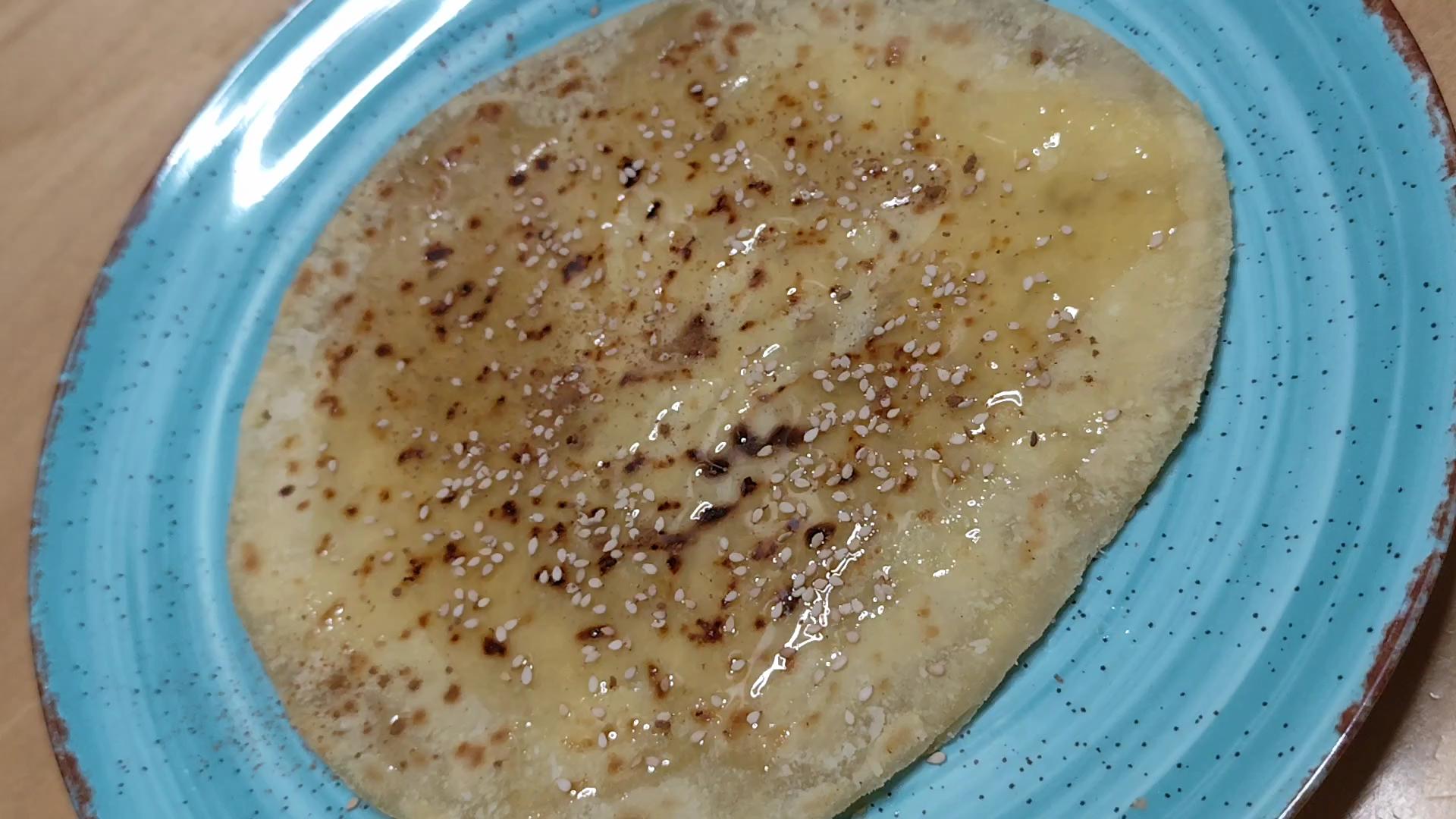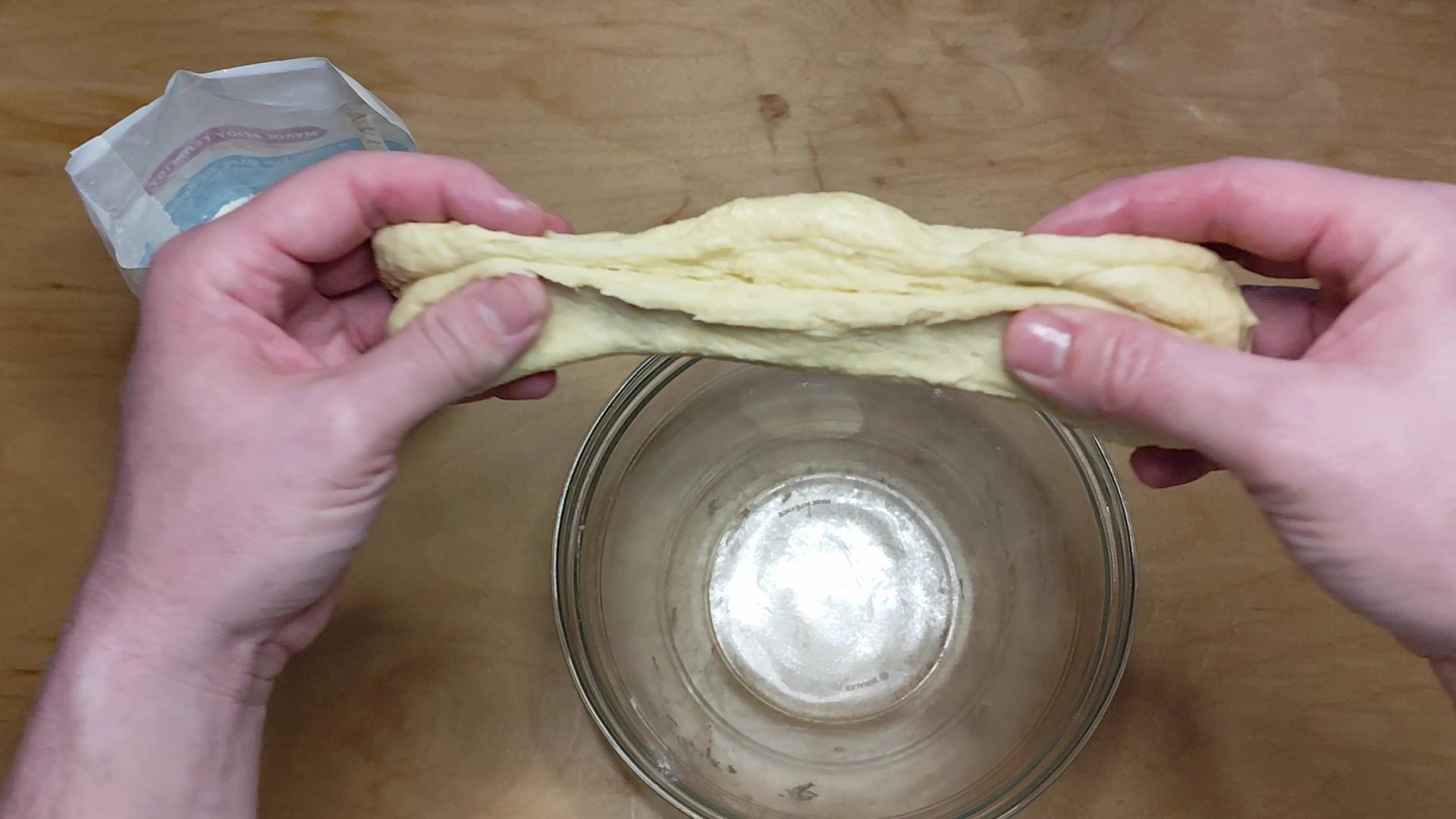
Traditional
Sfakian pies*
Sfakia is a historical region of southern Crete located within the Regional Unit of Chania.

*The local speciality, “Sfakian Pies” from Sfakia in Chania, are thin pancakes filled with mizithra cheese and served drizzled with honey.
Ingredients for 2 pieces:
For the dough:
100 g all-purpose flour
35 g olive oil
55 g water
Extra flour for rolling out the dough
A pinch of salt (1 g)
For the filling:
160 g Mizithra cheese from Chania
For the topping:
Thyme honey
Some toasted sesame seeds
A little cinnamon
For the second filling:
110 g Mizithra cheese from Chania
50 g sweet Graviera cheese
3rd Filling: Savory Sfakian Pie:
75 g mizithra cheese
35 g grated sweet Graviera cheese
40 g Cretan apaki*, finely chopped (or use guanciale* as a substitute)
1 g spearmint
4th Filling: Ιf you can't find mizithra cheese
130 g feta cheese made from sheep and goat milk
30 g cream cheese made from sheep and goat milk











Instructions:
In a bowl, we add the flour and salt, mix a little, and make a well in the center.
We add the olive oil and the water, and with a fork, we knead until it starts to come off the fork.
We remove it and continue kneading by hand until we get a smooth, fairly soft dough.
We let it rest for approximately 20 minutes.
We divide it into two even parts.
We shape it into a ball as best as we can with our hands and press it lightly to flatten it.
We place it on a tea saucer that we've floured well, and gently press from the center outward with our fingers to spread it a bit more.
We divide the Mizithra cheese into two even parts.
We take one part, shape it into a ball, and place it in the center, pressing it down slightly.
Then, we take the edges of the dough one by one and bring them toward the center of the mizithra cheese, sealing them at the same time.
Once all the edges are sealed and we have a smooth ball, we sprinkle some flour on top and gently pressing it down, we flatten it into the plate.
Then we transfer it to a parchment paper that we've floured extra, with the sealed side facing down.
We sprinkle a bit more flour on top again and gently press it with our hand, spreading it a little more.
Now we take the rolling pin and start rolling it out, being careful not to press too hard so the dough doesn't crack.
We roll it out to about the size of our palm with fingers spread.
We slide one hand under the parchment paper directly under the pie and lift it off the counter, and shake off the excess flour from the parchment paper.
Then, holding the hot pan, we flip it quickly, covering the pie and the parchment paper with it, and immediately return the pan to its normal position, letting the pie fall inside and removing the parchment paper.
We cook it over medium-high heat, dry, without any oil.
Once it's ready, we flip it with a spatula to cook the other side as well.
Then, we transfer it to a plate, let it rest for a few minutes (because the mizithra cheese is very hot) and drizzle it with honey and sprinkle sesame seeds on top.
*Apaki is a traditional cured meat from the mountains of Crete. It is mainly made from pork, usually from tenderloin, but it has also been made from chicken fillet. The meat is cut into pieces which are marinated in vinegar with spices, which always include cumin and possibly spearmint, for 2–3 days. Then it is then hung and smoked over branches of sage and thyme.
*Guanciale is a traditional cured meat of Italian cuisine, which farmers used to make in an effort to use all parts of the slaughtered animal and preserve them for a long time, without refrigeration. Its name comes from the type of meat used for its preparation, that is, the cheek (guancia), usually of the pig and more rarely of the calf. The most famous and well-known is the pork guanciale, an essential ingredient in traditional recipes from the Rome area, such as carbonara
For the second filling:
Mix the Mizithra well with the grated Graviera cheese and follow the same procedure as for the traditional one.
For the third filling:
Finely chop the spearmint and the apaki and mix all the ingredients well.
Follow the same procedure as the traditional one, just don't add honey on top.
You can, if you want, add a simple mushroom sauce with cream.
For the fourth filling:
Break the feta cheese into small pieces.
Mix the feta cheese well with the cream cheese and follow the same procedure as with the traditional one.

